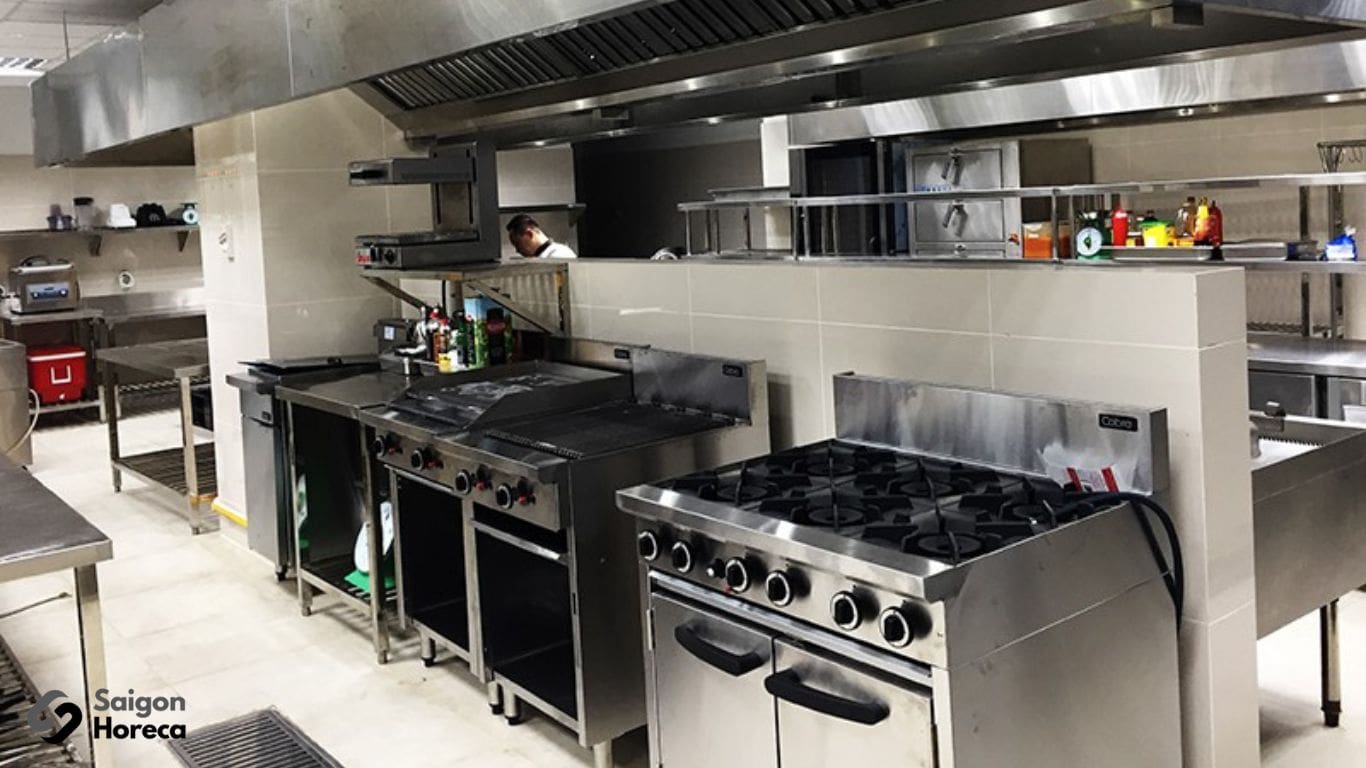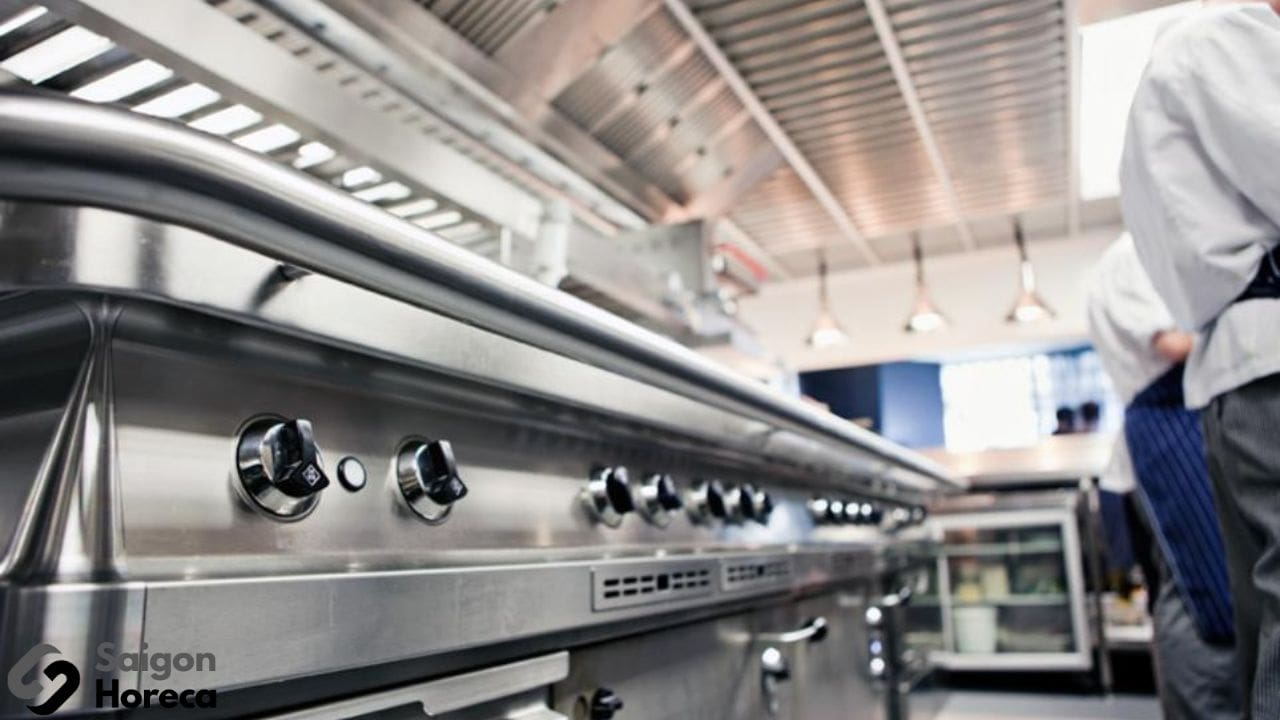Commercial European Kitchens or European Kitchens in Restaurants are essential elements for preparing European cuisine in specialized European restaurants. While […]
Read More
- Industrial Kitchen Equipment, Inox Kitchen Equipment
European-Style and Asian-Style Stoves: Exploring the Differences
- December 22, 2023
Embarking on an introduction to the culinary world, we take our first steps to explore the distinctive cooking styles of two of the world’s largest culinary cultures: European-style Stoves and Asian-style Stoves. On the global dining table, the clash between these kitchen traditions is not only a technological competition but also a collision of unique culinary characteristics. Today, we will immerse ourselves in the world of contrasting flavors, comparing the intense heat of Asian Stoves with the refinement of European-style Stoves. Together, let’s discover the unique features, strengths and weaknesses, and multi-dimensional perspectives on the traditional culinary art from two independent yet captivating cultural dimensions.
In this article
Distinguishing European-Style Stoves from Asian-Style Stoves: A Conceptual Perspective
In the diverse world of culinary arts, European-style Stoves and Asian-style Stoves stand out like distinct stars, offering users unique cooking experiences. This article aims to provide a clearer understanding of the characteristics, strengths, and weaknesses of both stove types, helping you make informed decisions for your kitchen space.
How do European-style Stoves differ from Asian-style Stoves? There are numerous ways to distinguish between European and Asian stoves. In this article, we will initially analyze them from a conceptual perspective, providing you with a comprehensive overview. Let’s delve into the definitions of each type of stove:
1. Explore the Advantages of Industrial Asian-style Stoves
- High Power and Continuous Operation
Asian-style stoves, known for their high power, offer the ability to cook continuously for extended periods. This not only saves time but also ensures efficiency for culinary spaces that demand quick turnarounds.
- High-Power Wok Burner
The wok burner is designed with high-power technology, producing a large and robust flame while minimizing the risk of black smoke settling on the cookware. This enhances performance and keeps the food visually appealing.
- Water Tap and Convenient Water Supply System
Asian-style stoves are often equipped with a water tap and a convenient water supply system, helping to cool the stove surface during use. High-quality materials such as 304 stainless steel keep the water clean, making it convenient for cooking and cleaning the stove.
- Blower Fan
The blower fan incorporated into the design of Asian stoves helps generate a powerful flame, meeting the demands of rapid food processing. Simultaneously, it reduces fuel consumption, saving gas and costs.
2. What Are the Advantages of Industrial European-style Stoves?
- High-Quality Cast Iron Burner Grates
European-style stoves often feature burner grates made of cast iron, providing a wide and robust surface with excellent load-bearing and impact resistance. The durability of these grates ensures safety and efficiency during the cooking process.
- Diverse Designs and High Aesthetic Appeal
In contrast to Asian stoves, European-style stoves emphasize aesthetic design. The diversity in styles not only adds elegance to the kitchen space but also creates artistic focal points.
- Versatility in Food Processing
European-style stoves are typically versatile in processing various types of food. This implies that you can unleash your creativity and diversify your menu, as these stoves accommodate a wide range of culinary options.
3. Comparison and Choosing the Right Stove for Your Kitchen
Choosing According to Usage Needs:
Based on cooking needs, kitchen space, and personal preferences, you can choose between Asian and European-style stoves. A deep understanding of the characteristics of each stove type will help you make the right decision.
Considering the two concepts we’ve discussed, you can observe the differences between these stove types based on the culinary styles you want to offer. Additionally, the choice may depend on the usage requirements of a restaurant or hotel to select the most suitable stove type.


How Do European-style Stoves Differ from Asian-style Stoves? Differentiating by Construction of Each Stove Type
When asking how European-style stoves differ from Asian-style stoves, we often classify them based on the components and structure of the stoves. Each type of stove has different structures and components based on the characteristics and cooking methods of each cuisine. Generally, we differentiate these two types of stoves as follows:
- For European-style Stoves, most European dishes emphasize sauces; therefore, these dishes often require longer cooking times at moderate temperatures. European stoves typically combine features and cooking parts for frying, baking, and grilling to save costs when purchasing. Specifically, there are two types of European stoves: stoves with ovens and stoves without ovens. Stoves with ovens are often used for baking various foods such as chicken, fish, pork, and desserts, providing convenience by saving cooking space and shortening cooking time, making them more popular. Additionally, European stoves can be either gas or electric, with 2, 4, or 6 burners depending on usage needs.
- For Asian-style Stoves, more intricate cooking methods are required, so they are usually classified into three types: simmering stoves, stir-frying stoves, and frying stoves. Simmering stoves typically use gas for cooking stews and braised dishes. Stir-frying stoves have a thick 1.0 – 1.2mm stainless steel stove body, specifically designed for stir-frying. The burners are made of high-quality cast iron for durability. The stove’s edge is equipped with a sliding bar to securely hold pots and pans, providing convenience and ensuring safety during cooking. Frying stoves are specialized for frying dishes like chicken, fish, meat, and potatoes. This type of stove ensures even cooking, removes excess oil, and is used at an appropriate temperature ranging from 195-210 degrees Celsius.
In addition to the prominent features of European-style stoves, this stove system is also equipped with many special support parts, facilitating chefs in cooking tasks effortlessly and efficiently. This article has provided you with an overview of the differences between Asian and European-style stoves. The key is to choose based on your needs and personal preferences. Hopefully, through this article, you will find the most suitable choice for your cooking space.
Monday - Friday
from 8h00 to 18h00
Số 40 Đường số 6, KDC Melosa Khang Điền, Phú Hữu, HCM.
Contact anytime
Welcome, valued readers, to Saigon Horeca, where we not only provide high-quality products for the F&B industry but also accompany […]
Read More




